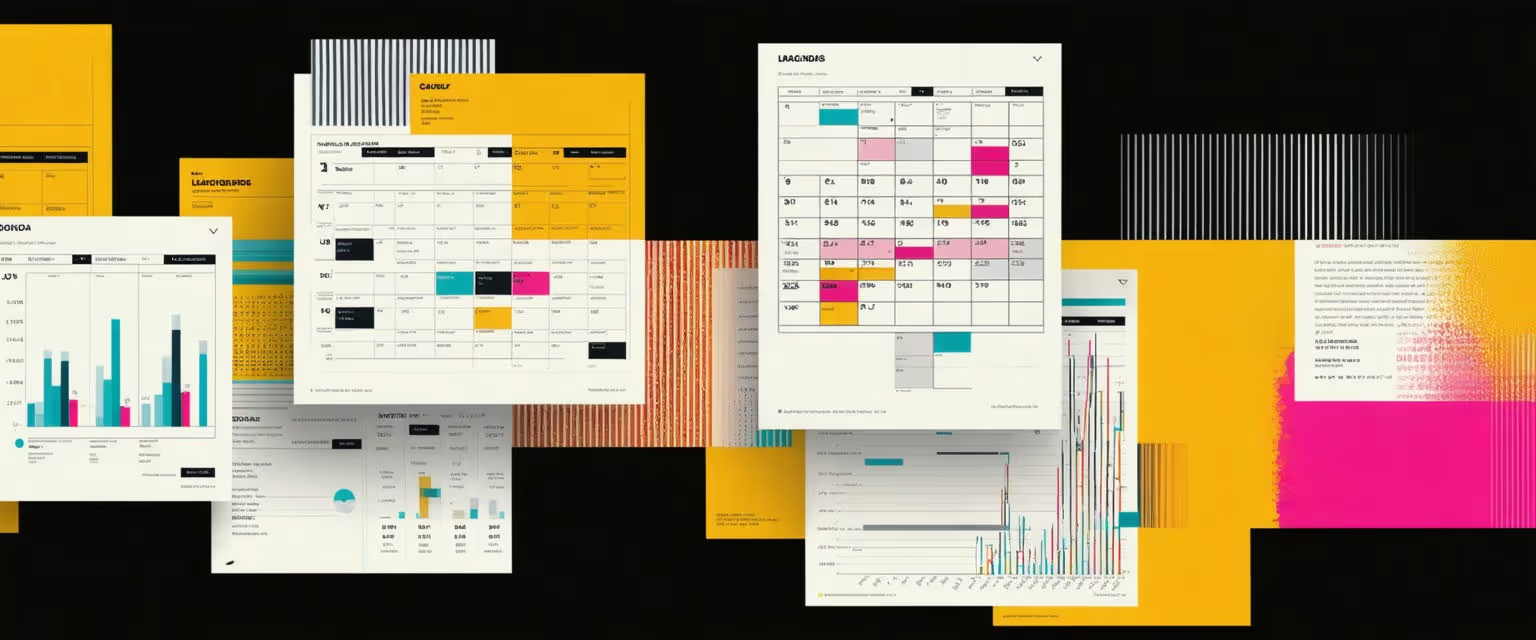All Posts
Marketing document handling
Mastering Automated Marketing Design Specs Analysis: A Comprehensive Guide

Learn how to automate design specs analysis in marketing with this comprehensive guide. Discover tools like Datagrid for seamless data integration.
Are you drowning in the complexities of integrating diverse data sources and wondering how to automate design specs analysis in marketing? The overwhelming chaos of data can stall your projects and drain your team's resources.
But there's a targeted solution: Datagrid's data connectors. These tools are designed to cut through the noise, making data integration and design specs analysis seamless and efficient in your marketing efforts.
By leveraging Agentic AI, Datagrid simplifies complex processes, freeing your team from endless manual tasks. The result? More time for strategic thinking and faster insights that truly make an impact.
Significance of Automation
Design specifications are the bridge between product development and marketing goals. By detailing every crucial aspect of a product's requirements, these specs make sure the final offering hits the mark with market demands and delights consumers.
Think of design specs as your product's DNA. They cover everything from looks and costs to customer needs, performance standards, materials, environmental concerns, and manufacturing limits.
Automating Design Specs Analysis in Marketing
Automation brings technology into the mix to interpret, organize, and evaluate design requirements quickly and accurately. Specialized software and algorithms can sift through massive amounts of specs, ensuring you consistently meet guidelines. This process is similar to AI-driven proposal automation, which simplifies complex tasks in marketing.
Automation in design specs taps into machine learning, natural language processing, and data analytics. It scans documents, zeroes in on key requirements, and flags inconsistencies. Here's what that means for you:
- Cost Savings: Cut down on staffing costs tied to manual reviews.
- Increased Accuracy: Reduce human errors by methodically handling large data sets, much like when you automate proposal validation.
- Enhanced Productivity: Speed up analysis so teams can handle more work, similar to how you can automate content briefs management.
- Strategic Focus: Free up your team from mind-numbing tasks, letting them focus on innovation and optimization.
Solutions for Automating Design Specs Analysis
Adopting automated design specs analysis is essential for teams looking to reduce errors and work smarter. AI-driven systems deliver deep insights and seamlessly integrate with your existing tools.
Overview of AI Tools and Technologies
Natural language processing makes sense of complex text, pulling out key requirements. Machine learning looks at historical data to predict trends or spot anomalies that might slip by in a manual review. These smart platforms can identify issues with aesthetics, materials, performance, or safety—all in real time.
Another big plus is integration. Many AI tools offer APIs or plug-and-play features, so designers, engineers, and marketers can all work off the same data. Agentic AI capabilities, for instance, use multi-agent systems that autonomously set and pursue goals, even connecting with enterprise solutions to keep your data flowing smoothly.
Selection Criteria for Tools
Choosing the right AI tool is crucial. Here's what to consider:
- Functionality and Features: Ensure the tool covers all design aspects—esthetic, cost, environmental, safety, and more.
- Integration Capabilities: Look for flexibility with file formats and seamless integration with your current systems.
- Usability and User Interface: An intuitive interface makes adoption smoother.
- Scalability and Customization: The tool should grow with your projects and allow for tweaks to meet specific needs.
- Support and Maintenance: Regular updates and solid customer support keep things running smoothly.
Step-by-Step Guide to Automate Design Specs Analysis
Making the leap from manual to automated design specs analysis might seem daunting, but with the right steps, you can save time and reduce errors dramatically. Here's a simple roadmap:
- Assess Your Current Processes
Figure out which repetitive, time-consuming tasks could benefit from automation. Document your existing workflows and measure performance to see improvements once you implement new tools. - Identify Automation Opportunities
Pinpoint areas like data entry or routine checks where AI can make the biggest difference. - Choose the Right Tools
Select platforms that fit your needs, budget, and company culture. Make sure they integrate smoothly with your existing software. - Develop a Transition Plan
Set clear milestones. Allocate resources and anticipate any roadblocks. Communicate the benefits to your team early on to get everyone on board. - Test and Validate
Run pilot programs using historical data to fine-tune the system. Use feedback to improve accuracy and fix any issues. - Provide Training and Support
Offer hands-on demos so your team feels comfortable with the new automation features. Assign experts who can help others. - Implement Gradually
Start with simpler tasks. Once those are running smoothly, expand automation to more complex areas. - Monitor and Optimize
Keep an eye on key metrics and gather feedback. Adjust settings or upgrade features to ensure optimal performance. - Stay Updated
Technology evolves quickly. Regularly update your tools to handle changes in design specs or take advantage of new features.
Best Practices and Considerations
Start by defining your objectives. Clear goals help you tailor automation tools to your project's specific outcomes. Keep your software up-to-date and ensure it meshes with your existing workflows. Prioritize training so your team can get up to speed quickly.
Set up regular feedback loops to catch any issues and stay aligned with changing business needs. Choosing scalable, flexible solutions means you're ready for future growth or shifts in project requirements.
How Agentic AI Simplifies Marketing Tasks Automation
Agentic AI simplifies the way you manage marketing documents and data. It helps your team pinpoint key audiences, refine your outreach, and evaluate campaigns with more precision.
Smart Audience Targeting
Datagrid's AI-powered platform digs through huge datasets to find prospects most likely to convert. By creating audience segments with buyer propensity scores, marketers can focus on the best leads and tailor content to each group's unique traits. The result? Greater impact with less wasted effort.
Automated Data Enrichment
Datagrid pulls from multiple data sources to keep contact info current and enrich profiles with relevant industry details. By learning to automate lead enrichment, you can sharpen your focus, ensuring every message reflects the latest insights—key for personalized outreach.
Optimizing Multi-Channel Engagement
With seamless integration across communication channels, Datagrid analyzes when your audience is most responsive. This data helps you fine-tune timing and frequency, taking the guesswork out of scheduling. Plus, centralized content management ensures consistent messaging, whether you're sending emails or posting on social media.
AI-Driven Analytics and Reporting
Robust analytics track engagement metrics in real time. AI uncovers patterns in successful interactions and provides detailed performance summaries, enabling your team to refine campaigns with sharper insights.
Automated Task Execution
Tasks like sending personalized follow-ups or scanning interaction logs happen automatically, freeing up marketers to focus on strategy and building relationships.
By leveraging these capabilities, your team can craft stronger campaigns, boost engagement, and make data-driven decisions that steer your marketing strategies toward greater profitability.
Simplify Automating Marketing Tasks with Agentic AI
Don't let data complexity bog down your team. Datagrid's AI-powered platform is designed specifically for marketing professionals who want to:
- Automate tedious data tasks
- Reduce manual processing time
- Gain actionable insights instantly
- Improve team productivity
See how Datagrid can help you increase process efficiency.
Create a free Datagrid account












